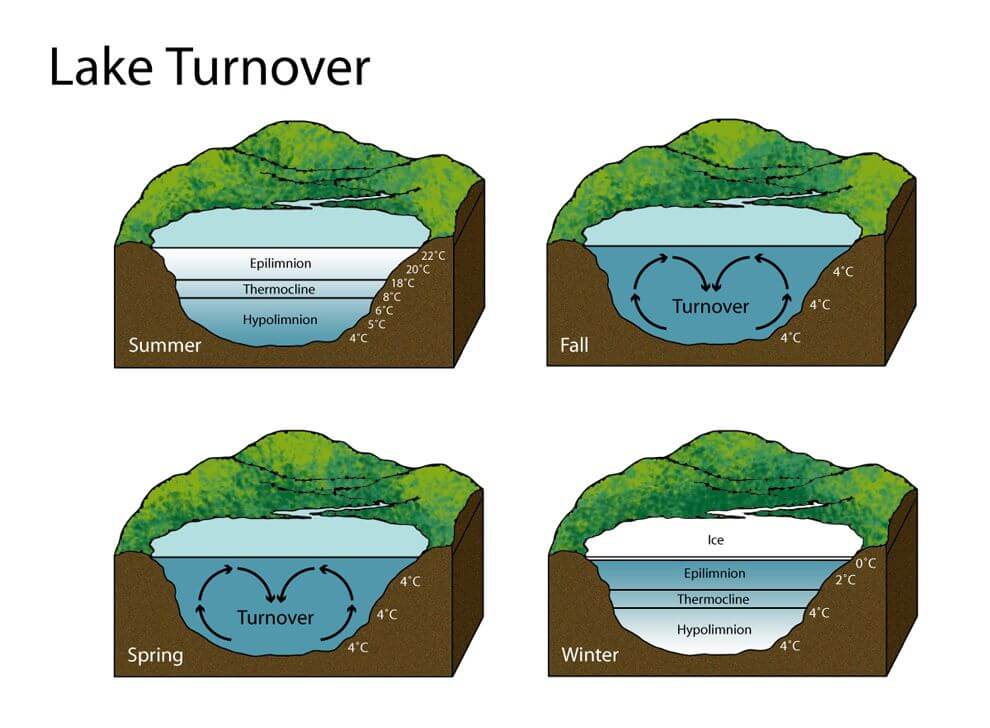Taste and Odor Update: Geosmin and Methyl-Isoborneol (MIB)
We have received reports about an “earthy” or “musty” taste and odor in the water. While these changes are mostly aesthetic, they can understandably raise concerns. These taste and odor changes are typically caused by Geosmin and Methyl-Isoborneol (MIB), naturally occurring compounds that are produced by certain types of algae and bacteria in the water. Geosmin and MIB are not harmful at the levels typically found in drinking water, but they can cause noticeable changes in taste and odor.
What are Geosmin and MIB?
Geosmin and MIB are compounds that give water an earthy or musty taste and odor. They are naturally occurring and are most commonly found in surface waters like lakes and reservoirs. Both Geosmin and MIB do not pose a public health risk, but their presence can be concerning to customers due to the changes in taste and odor they create.
In fact, utilities around the country frequently receive customer complaints during times when these compounds are present in higher levels. These compounds are especially common during late summer and fall, when water temperatures are warmer, and algae and bacteria are more active.
What Causes Geosmin and MIB?
Certain kinds of algae and bacteria in lake and reservoir water naturally produce Geosmin and MIB. The levels of these compounds typically rise during the late summer into early fall, when water temperatures are higher, and lake levels are lower. This increase in Geosmin and MIB production is what often leads to noticeable taste and odor changes in drinking water.
What We’re Doing to Address the Issue
At DeKalb County's Scott Candler Water Treatment Plant, as well as other utilities, we closely monitor both Geosmin and MIB levels to ensure that water quality remains safe. Our monitoring efforts include:
Proactive testing: We routinely test for Geosmin and MIB twice per week from late spring to late fall, when these compounds are typically most prevalent.
Treatment steps: When levels rise, we increase treatment processes, such as adding Powdered Activated Carbon (PAC), which helps absorb and remove these compounds, significantly improving taste and odor.
Ozone dosage: We also adjust the ozone treatment to oxidize and remove the organic compounds that contribute to taste and odor issues. This is a key part of our overall approach to ensure your water remains clean and safe.
How Do Geosmin and MIB Affect Taste and Odor?
Both Geosmin and MIB are responsible for producing a musty, earthy smell and taste. However, these compounds do not pose a health risk. They become noticeable when levels rise above 10 parts per trillion (ppt), though some people may detect them at 5 ppt. To give you an idea of just how small that is, it's equivalent to one-half of one cent in a billion dollars.
What Can Be Done About Geosmin and MIB?
While these compounds are difficult to remove during treatment, we are actively working to mitigate their impact:
Powdered Activated Carbon (PAC): This is added to absorb and remove Geosmin and MIB during the algae growing season, improving the taste and odor significantly.
Monitoring and Adjustments: We continuously monitor water quality, and when Geosmin and MIB levels rise, we adjust treatment processes to reduce their effects.
How Can You Improve the Taste of Water at Home?
While the presence of Geosmin and MIB does not pose a health risk, we understand it can affect the enjoyment of your drinking water. Here are some simple steps to improve the taste:
Refrigerate the water: Chilling the water can reduce the musty odor and improve the taste.
Add lemon juice: A few drops of lemon can help mask the earthy taste and improve the overall flavor.
Why This Happens: Lake Turnover
During the fall, the natural occurrence of lake turnover can exacerbate these taste and odor issues. Lake turnover happens when changes in air temperature cause surface water to cool, become denser, and sink, while deeper water rises to the surface. This inversion can bring up organic compounds from the lower layers, which may cause temporary changes in taste and odor.

Rest Assured: Water Quality Is Safe
Even though taste and odor issues can be unsettling, we want to assure you that the water is safe to drink and suitable for all household and everyday uses. We are committed to providing you with high-quality drinking water, and we continuously monitor and adjust our treatment processes to maintain water safety and quality.
We appreciate your understanding and patience as we work through these seasonal changes.
DeKalb County Department of Watershed Management
---
Frequently Asked Questions (FAQs)
Q: What is being done to address the taste and odor issues?
A: Our plant operators and laboratory personnel constantly monitor water quality, including taste and odor. In response to increased Geosmin and MIB levels, we are optimizing chemical feed systems, increasing ozone dosage, adding Powdered Activated Carbon when necessary, and washing filters more frequently to address the compounds. We also conduct more frequent testing to ensure water remains safe and high-quality.
Q: How can I tell if the taste and odor issues are from Geosmin or MIB?
A: Geosmin and MIB are most likely the cause if you notice an earthy or musty smell and taste. These compounds are common during the late summer to fall months, especially in warmer temperatures and low water levels. They are detectable at levels as low as 5 parts per trillion, but some people may not notice them until they exceed 10 ppt.
Q: Is this a health concern?
A: No, while Geosmin and MIB can affect taste and odor, they do not pose a health risk. They are simply compounds that can cause temporary sensory changes in the water.